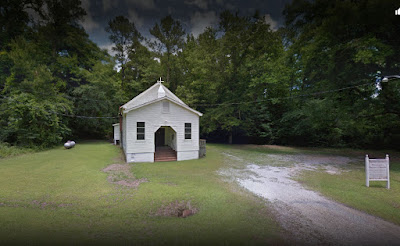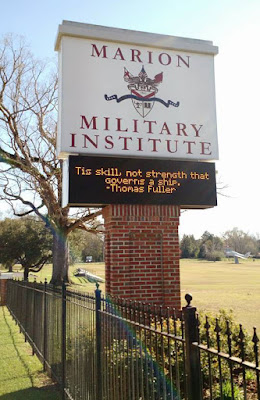Actually, it was pretty much a failure, but I will try again today.
 |
| Gator pond, Gulf Islands National Seashore, Ocean Spring, Mississippi. |
When I was in
the Bahamas in 2016, I was fascinated with palms, a family of plants with more than 2000 members. I meant to be fascinated with them on this trip, too. Instead, the southern live oak has captured my heart.
These are not true evergreens. Rather, like young beeches and oaks up north, they drop their old leaves immediately before new leaves emerge in the spring. The difference is that the old leaves remain green right up until the swap, whereas our northern ones dry up and rattle in the winter wind.
This week, the new growth on New Orleans’ live oaks is emerging. That leaves the branches denuded of their characteristic heavy, dark covering, allowing their parasites to dominate the scene. These include
ball moss,
Spanish moss,
resurrection fern, and
mistletoe. The trees seem to tolerate them, but they make them look more gnarly than they actually are.
 |
| Spanish moss at Mobile Bay. (Photo courtesy of Douglas Perot) |
There are countless examples of ancient live oaks here in New Orleans. They have weathered terrible storms for many decades.
On Sunday, we made the drive from Mobile to New Orleans through a heavy rain. My intention was to paint at Davis Bayou at Gulf Islands National Seashore in Mississippi, but the rain drowned all visibility. I did this little sketch of a gator pond before the lightning drove me away.
Louisiana ‘s wild alligator population is estimated to be around two million. Apparently, that’s not enough, because there are an additional 300,000 farmed alligators here. That, I think, means you’re likely to see one anywhere there’s water. I imagine they’re relatively torpid right now. Daytime temperatures are the low sixties. Still the sun—when you’re in it—is hot, and reptiles love sunbathing.
 |
| Live oak and folly (unfinished) at City Park. |
I set up to paint in City Park. This has a wonderful botanical garden, great swathes of trees, meandering creeks, and the additional attraction of the Morning Call coffee stand in the old casino. It was, however, unwise of me to choose a backlighted tree with a domed, columned folly behind it. I spent the morning cheerfully drawing the building and trees and started to limn in the colors when two things occurred to me. First, I was unbearably hot, and second, the light had turned. My backlighting was no more.
 |
| Fewer beignets, more painting time! |
I gave it up and decided to go down to the historic district to find some lunch and the waterfront. What I thought might be a two-hour jaunt used up the remainder of the day.
“During the week, especially in Manhattan, the pace is so slow, you often feel that any mode of transportation might be as fast as any other—you could walk, drive, take a cab or ride the subway and get there about the same time—so we choose our transport more on aesthetic grounds,” Garrison Keillor once said.
The same seems true of New Orleans. I raced my traveling companions back to City Park—they on the trolley and on foot, me in my car. We arrived back at exactly the same time.







